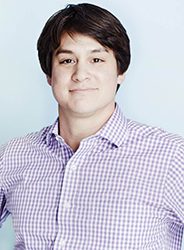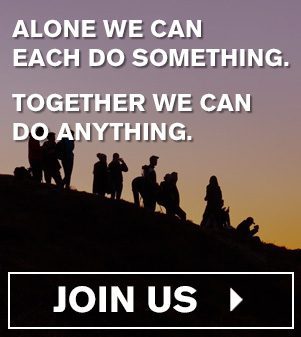
Since he was a kid growing up in Albuquerque, New Mexico, the outdoors have been a passion for Ray Rivera. Through a government career involving a stint at the Department of the Interior and the White House Council on Environmental Quality under the Obama Administration, Rivera has long tied together his two passions: public policy and expanding access to and diversity within outdoor recreation.
Now, on the board for the Outdoor Foundation, Rivera is working on the Thrive Outside Community Initiative, which provides multi-year capacity building grants to diverse communities in order to create or strengthen partnerships between existing local organizations such as schools, Boys and Girls Clubs, YMCAs and nonprofit conservation and outdoor organizations that create repeat and reinforcing positive outdoor experiences for kids and families. We asked for his thoughts on the program’s goals, the importance of diversifying the next generations of outdoorists, and what drives his passion for the project.
What is Thrive Outside trying to achieve?
Thrive Outside is about collective impact. If we’re going to solve the problem of diversifying outdoor recreation, including socioeconomic and age diversity, it’s going to have to come from these communities and these organizations that already have members who are more diverse in many different ways.
Instead of creating new programs—unless that’s what a community wants—we’re focusing on connecting groups that have already been doing the work, so we can multiply their impact. There may be, for example, a kayaking group five miles downstream from a group doing science exploration on the banks of the river, and before they weren’t talking to each other. But now, they’re collaborating and leveraging each other’s expertise, getting each other’s participants to cross-pollinate and get into different aspects of the outdoor world.
What’s your dream for the impact Thrive Outside can have?
We’re working with all these communities and then kind of pulling the quantitative and qualitative resources to keep finding what’s working, what’s not, what the best practices are, and what’s making a difference.
We want to help kids have frequent, repeat experiences—not just experience the outdoors one time. Sometimes people get to go to the Tetons for a week and it changes their life, but in terms of creating lifelong conservatists and outdoor enthusiasts, that usually comes from repeatable and varied experiences.
What was your outdoor experience like growing up?
I grew up in Albuquerque, New Mexico, where we were very fortunate to have public lands all around us. I also grew up fairly low-income. My dad’s side of the family is from New Mexico, and he met my mom when he was stationed in South Korea when he was in the Army. Growing up, we would go camping here or there, but we didn’t spend a ton of time in the outdoors. It was actually my uncle and aunt, who didn’t have kids, who took my brother and I out for moonlight hikes and taught us how to mountain bike. As I got into politics, public policy, and government, I quickly started to realize that we have to do a lot of work to protect these places we love so much. They don’t just take care of themselves. It takes resources, people, and commitment.
How do the outdoors influence your life today?
Politics and government are places where people have a lot of passion, but it’s also very frenetic. It’s a career where you’re carrying two cell phones and checking four email addresses and the news cycle and the spin cycle of the day. Since high school, it’s been part of my life to live this fast-paced, frenetic advocacy, grassroots-organizing lifestyle. Maybe you’re knocking on doors all day, so you get a little bit of fresh air, but you’re not really in nature. Outdoor recreation is the counterpoint to that and allows me to live a balanced lifestyle, so that when I have time away from organizing for something that was so passionate and all-consuming, I can get outdoors and mountain bike or do some skiing and hiking.
What are your hopes for future generations of outdoorists? What does the ideal outdoor world look like for them?
Aside from inclusivity, we need to demystify the outdoors and increase the number of outdoor activities that you can access within close range, especially in urban areas. There are so many ways to be involved in the outdoors, and we have to send that message. The outdoors is for people barbecuing at Sloans Lake in Denver and for people who want to hang off a cliff over a canyon. I think we have to do a better job of messaging that.
The outdoors also needs our protection, love, and commitment to perpetuate it for the next generation. As people get involved with the outdoors, they also need to learn how to impact public policy to protect the outdoors. The outdoors are an avenue for you to get involved with public policy in a way that feels very personal to you. We all feel the difference when we can spend many magical moments in the outdoors, and we know what it means to our life.




